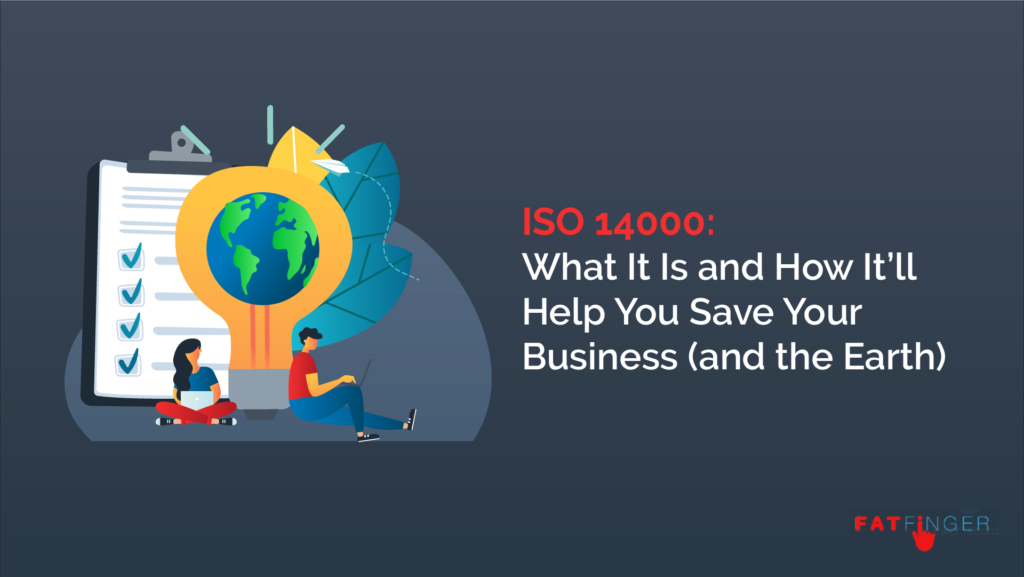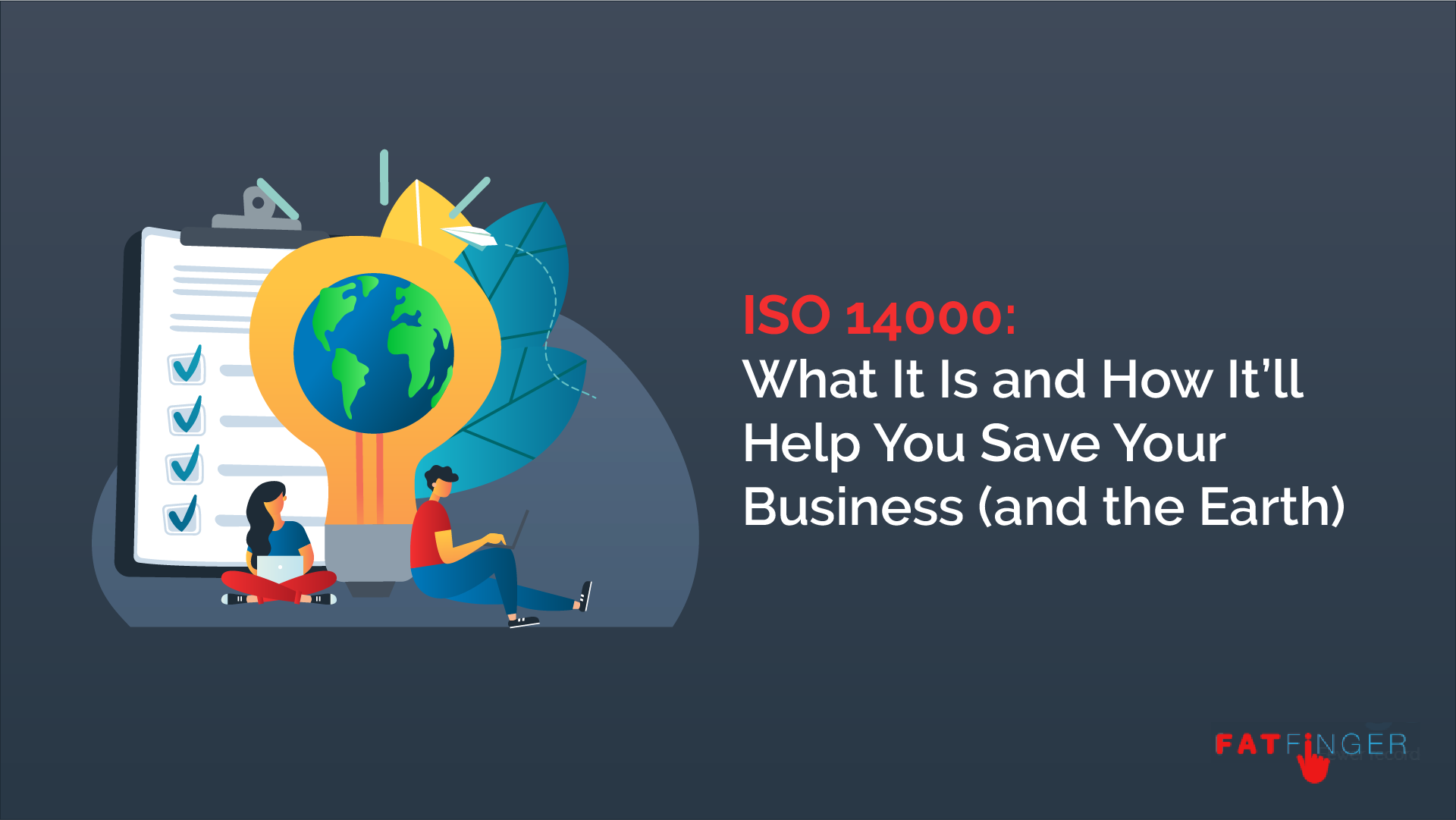
The world as we know it is teetering on the brink.
Since the 19th century, the Earth’s average surface temperature has risen by 2.12 degrees Fahrenheit. Glaciers deplete while oceans get warmer and rise to new, unprecedented physical heights. Average wildlife populations have dropped by a whopping 60% in just over 40 years.
Ultimately, it’s human activity causing massive amounts of carbon dioxide to be released, thereby trapping heat, warming up the planet, and causing disastrous effects.
But don’t take my word for it. Acclaimed entrepreneurs like Elon Musk understand the peril we’re in.
Musk himself said:
“We are running the most dangerous experiment in history right now, which is to see how much carbon dioxide the atmosphere can handle before there is an environmental catastrophe.”
— Elon Musk
Bill Nye, the adored and trusted scientist and presenter, also exclaimed:
“It’s not that the world hasn’t had more carbon dioxide, it’s not that the world hasn’t been warmer. The problem is the speed at which things are changing. We are inducing a sixth mass extinction event kind of by accident and we don’t want to be the ‘extinctee.’”
— Bill Nye
We all need to do our part, then, to make sure we’re treating the Earth fairly, and leaving it a clean, hospitable, and abundant environment for ourselves and future generations.
So what if I told you that you could do all this while making your business better, more efficient, and more profitable?
With ISO 14000, this win-win situation can happen.
In this FAT FINGER post, I’ll explain everything you need to know about ISO 14000, including all the relevant acronym definitions, how ISO 14000 can positively impact your business, and examples of how it’s already helping others.
Read the sections below:
- What are ISO, ISO 14000, and EMS?
- How ISO 14000 dramatically benefits businesses
- Examples of how ISO 14000 has benefited other businesses
- 5 important things to do before implementing an EMS
- Use FAT FINGER to implement an EMS that’ll save your business (and the Earth)!
There isn’t a minute to waste, so let’s dive in.
What are ISO, ISO 14000, and EMS?

When it comes to ISO in general, there are a fair few numbers, acronyms, and abbreviations.
To help you get your head around it all, here’s what ‘ISO,’ ‘ISO 14000,’ and ‘EMS’ all mean, respectively.
What does ISO stand for?
‘ISO’ stands for the International Organization for Standardization. It’s an independent standard-setting body (i.e. one that isn’t influenced by governments or political parties) that helps businesses around the globe to ensure their processes, procedures, and systems are safe, secure, and efficient.
Basically, they help businesses to maintain high standards with, well, standards!
The ISO began life in London just after the end of World War II. 65 delegates from 25 countries all met to discuss how the organization would operate and how it’d work. Since then, they’ve created over 20,000 standards (known as ‘ISOs’) to help businesses be the best they can be, all while ensuring the safety of their workers, their consumers, the public in general, and our Earth.
It’s safe to say that the International Organization for Standardization is highly respected, as it has members in 165 countries, and millions of businesses have been certified to be complying with the ISO’s many, many standards.
What is ISO 14000, specifically?
ISO 14000 is a family of ISO standards specifically for the creation, implementation, and continuous improvement of an environmental management system, otherwise known in acronym form as an EMS. This means that if your business wants to not only be environmentally conscious, but environmentally helpful, then the standards in the ISO 14000 family are the ones you want to use and comply with.
As the ISO team themselves say:
“The ISO 14000 family of standards are developed by ISO Technical Committee ISO/TC 207 and its various subcommittees. It maps out a framework that a company or organization can follow to set up an effective environmental management system. Designed for any type of organization, regardless of its activity or sector, it can provide assurance to company management and employees as well as external stakeholders that environmental impact is being measured and improved.”
— The ISO
Within the ISO 14000 family are specific standards. The key standards include:
- ISO 14001: Specification of Environmental Management Systems.
- ISO 14004: Guideline Standard.
- ISO 14010 – ISO 14015: Environmental Auditing and Related Activities.
- ISO 14020 – ISO 14024: Environmental Labeling.
- ISO 14031 and ISO 14032: Environmental Performance Evaluation.
- ISO 14040 – ISO 14043: Life Cycle Assessment.
- ISO 14050: Terms and Definitions.
Now, if you’re familiar with ISO standards, you may be thinking, “hmm, ISO 14000 sounds similar to ISO 9000!”
That’s because it is.
The ISO 9000 family of standards — of which over one million companies are certified — is for quality management systems. Considering both ISO 14000 and ISO 9000 are for management systems, there’s overlap, certainly. Though, the main difference is that ISO 14000 is laser-focused on environmental practices first and foremost.
But if you are new to ISO, do note that there’s technically no legal requirement to specifically comply with ISO 14000 standards and implementing an ISO EMS. However, many businesses do implement an EMS of some kind to help comply with any environmental laws and regulations in their state or country.
Whether you’re new to ISO or you’re a bit of an ISO maestro, we certainly recommend that you become acquainted with ISO 14000. After all, by doing so, you’re opening your business to a host of benefits (more on that very soon), all while saving the Earth!
What is an EMS?
An EMS is an environmental management system.
An EMS is, essentially, a collection of processes, procedures, and policies that tackle environmental issues in a business context head-on. On top of reducing the negative environmental impact that a business has — for example, bettering how it goes about the transportation of goods, or the usage of materials — having an EMS makes business processes more streamlined, efficient, and even more cost-effective.
To build an effective EMS though, you’ll need advice on what to do and how to do it, on top of clear, actionable steps that can be taken. This is exactly what ISO 14000 does; ISO 14000 provides businesses a blueprint for everything related to an EMS, ensuring that the EMS they implement is solid and not a dud.
That’s all the definitions covered.
Now that they’re out the way and you have a firm understanding of what’s what, let’s get to the good stuff: looking at the multitude of ways ISO 14000 can have a massively beneficial impact on your business!
How ISO 14000 dramatically benefits businesses

The thing with the ISO is that the standards they provide are so robust and so effective, putting in the time and effort to comply with their standards is nothing but a positive. That’s to say, businesses gravitate towards ISO standards pretty much solely for the benefits they bring, whether that’s because of altruistic reasons, financial reasons, or perhaps even a little bit of both.
Simply put, ISO standards = good for everyone and everything.
But how, exactly, are ISO standards beneficial — and specifically ISO 14000 standards?
Let’s cut to the chase:
- Your business’ reputation will be dramatically bolstered. Being able to say that you’re certified to standards in the ISO 14000 family is a huge badge of honor — and people will certainly take notice if you wear that badge with pride. From suppliers to consumers, traders to, well, pretty much everyone who knows what ISO 14000 is, they’ll all be impressed by your commitment to your business and its environmental impact. For you, this results in more business as you’re tapping into new consumer areas (in fact, 87% of consumers perceive companies that support social or environmental issues more positively). Also, you’ll have stronger partnerships with suppliers, stockers, and governmental agencies, and with more doors being opened in general. What could your business do once those doors have been opened?
- Stakeholders will have more confidence in your business. All your stakeholders have invested in your business in one way or another. Because of this, they’ll want to see you succeed — particularly your investors. But, statistically-speaking, only around half a million “sites” (i.e. locations where work or a service is carried out) have been ISO 14001 certified. What’s more is that countries like Japan and China are leading the way when it comes to ISO 14001 certification. So, by complying with ISO 14000, and ISO 140001 especially, your stakeholders will see that your business is ahead of the curve, and that it’s a forward-thinking, modern business that deserves a place in the future.
- You’ll have more money in the bank by cutting costs. Running a business is always a delicate balancing act. But when it comes to being environmentally conscious in a business context, you want to decrease your negative environmental impact without increasing spend. Luckily, by implementing an EMS and complying with standards in the ISO 14000 family, you’ll actually be saving money rather than throwing it away. Due to the very nature of standards like ISO 14001, you’ll identify environmental costs like water, energy, gas, and even paper, and then reduce those costs where possible. To boot, you’ll uncover areas where, instead of buying new materials outright, you can reduce, reuse, and recycle. The cherry on the cake is that an EMS that correlates to ISO 14000 standards will make your processes leaner, tighter, and less wasteful, which will certainly aid with reducing costs.
- You’ll be engaging in continuous improvement. The ISO 14000 family of standards — and, again, ISO 14001 in particular — requires businesses to undergo continuous improvement. “But what does that mean?” I hear you ask. Well, let’s first start with what continuous improvement is not. Continuous improvement is not implementing a process, procedure, or system and then forgetting about it, leaving it to gather dust, and never improving it over time. Continuous improvement is the complete opposite of this. It’s periodically looking at how your business processes and the like can always be enhanced, never becoming outdated or useless. ISO 14001 does this through expansion, enrichment, and upgrading — in other words, by not only focusing on the environmental and business impact of purely operational measures, but everything your business does!
- Your business will do its part to help sustain our planet. While having more money, being seen as an exemplary business, and running efficiently and effectively are all massive plus points, it’s really helping the Earth that’s at the heart of ISO 14000. Because, whether you’re a manufacturing company using raw materials, or you’re a construction company in charge of building countless new homes, how you operate day in, day out will impact the environment. Schneider Electric, the American Water Works Company, and Cisco Systems have all been named as some of the world’s most environmentally sustainable companies according to Statista, and will certainly be using an EMS to do their part. Are you ready to join their ranks?
Need I say more?
Examples of how ISO 14000 has benefited other businesses

If you’re somebody who thought “actually, yes, I would like you to say more,” then this section is for you. Or, if you’re just interested in how other businesses have found success with ISO 14000, then this section is also for you.
First, let’s look at Premier Foods.
Premier Foods is one of the UK’s leading food manufacturers. In their portfolio, they have iconic brands such as Mr. Kipling, Oxo, Bisto, and even Cadbury’s. It’s safe to say that, considering their monopoly, they must be making a whole lot of cash… right?
Right.
In 2020, their revenue was £847 million, their operating income £95 million, and their net income £46 million, according to their annual report. This equates to roughly around 1 billion, 131 million, and 63 million dollars respectively.
This mammoth company has been using ISO 14001 especially to make mammoth strides both economically and environmentally, as Richard Giles, the Safety Manager at Premier Foods, explains:
“Since 2001, we have used ISO 14001 to make big improvements such as increasing our organization’s recycling rate. We have now been at ‘zero landfill’ since March 2013 and are recycling and reusing 100 % of our site wastes. We have continued to improve our relationship with neighbours because we have the processes in place to respond quickly to any concerns. Among other benefits, our processes and the appointment of Green Matters Champions ensure that staff are environmentally engaged and aware of the site’s potential impact on the environment.”
— Richard Giles
The Japanese company UPCON, which is in the construction industry, is similarly prolific and has worked with airports, expressways, and even the Japan Aerospace Exploration Agency.
UPCON has also used the ISO 14000 family’s most important standard, ISO 14001, to grow as a company while simultaneously taking care of the environment, as Nobukazu Matsudo, the company’s representative, says:
“Achieving certification to ISO 14001 in 2008 allowed us to document effectively the details of our method for all staff to share and standardize the quality of work at every site. In addition to boosting our competitiveness through more accurate quality control, ISO 14001 also strengthens our confidence in our method by demonstrating that it produces 90 % less CO2 emissions when compared to concrete replacement. What’s more, since our certification, staff engagement and motivation have increased, safe in the knowledge that they are contributing positively to the environment through our products and services.”
— Nobukazu Matsudo
After reading these jaw-dropping quotes, I’m sure you’ve come to realize the monumental impact that ISO 14000 has.
5 important things to do before implementing an EMS

I don’t want to stop you from implementing an EMS that’s in line with the ISO’s ISO 14000 standards — far from it! In fact, I believe that every business should do so, considering the myriad ways it positively impacts both businesses and the environment.
But what I don’t want you to do is to steam ahead and go about it the wrong way.
This is why I’m about to tell you 5 important things that should happen before your business starts the internal work on an EMS.
- Firstly, understand that an EMS takes time to build and implement. It certainly won’t be an activity that takes a day or two. Set a realistic schedule for your team to abide by, which allows them to still complete their other important daily tasks while also being able to dedicate a good amount of time and effort to EMS-related duties.
- Secondly, define your goals! What is it that you specifically want to be achieved once an EMS in place? Is it reducing pollution? Is it being more compliant with regulations? Have a list of clearly defined goals so that the team working on building and implementing the EMS knows exactly why they’re doing the work they’re doing.
- Thirdly, ensure you have support from top management. Considering that EMS efforts, at least at the beginning, will take away time from the people who’ve been assigned to work on it, top management will need to know that time is being put to good use. To boot, you may need their approval on an EMS budget, which they certainly won’t give if they don’t support the project, let alone know about it. Having their support will mean wider team engagement, too.
- The penultimate piece of advice is to assign an EMS champion. An EMS champion is basically the project leader; the person who’s knowledgeable when it comes to systems, and has the project management skills to make sure that a team all comes together and completes the project at hand successfully. If they have previous experience with ISO standards, then all the better.
- The best piece of advice has been saved until last… use process-orientated software! To document, manage, and follow the processes and procedures you need to be in line with ISO 14000, you don’t want to use a clunky tool like Microsoft Word or even Excel. Instead, software that’s process-orientated — like FAT FINGER — can help you build out and use an EMS that’s golden in the eyes of the ISO.
On that last point, let me explain in a little more detail…
Use FAT FINGER to implement an EMS that’ll save your business (and the Earth)!
FAT FINGER enables teams to easily digitize their essential processes, procedures, and overall operations with one simple tool. Thanks to our tool’s apps — which are digital checklists — team members can document, manage, work through, and optimize their processes time and time again.
We’ve specifically created FAT FINGER with ease of use in mind, meaning that our tech is super simple for users to, well, use!
To see how it works, check out the video below.
Specifically, in terms of how you can use FAT FINGER in relation to ISO 14000, you can use our nifty platform to build out and implement your entire EMS. All the related processes can be documented as FAT FINGER apps, making our platform a one-stop-shop and centralized tool for your EMS.
In a sentence, FAT FINGER is the solution you need for all your EMS (and ISO) endeavors.
In addition to our apps, there are a ton of other state-of-the-art features, including assignment features, notification features, authorization features, and even real-time dashboard reporting. This enables your team members to go about their day like pros, and always complete tasks to high standards.
Ready to try FAT FINGER yourself?
Sign up for a free account here.
Just don’t forget to check out the super informative video below, where the CEO of FAT FINGER, James McDonough, goes over some must-know best practices.
Here’s to saving your business and saving the Earth.


